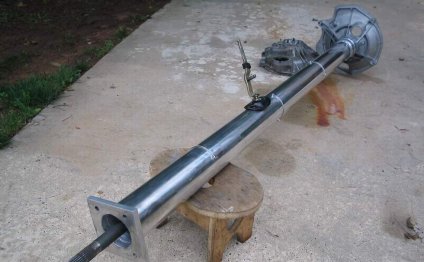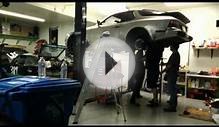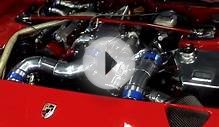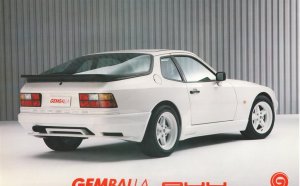
Porsche 944 torque tube
- Assess the distance from the transmission end of this drive shaft into the bellhousing end of the tube and record it. This is certainly and so the drive shaft end can later be reinstalled into correct level into the torque pipe.
- Get a 6 base long bit of standard black or galvanized 1/2" metallic plumbing work pipe at the hardware shop. Slide the termination of this pipeline within the pilot diameter at the front for the drive shaft.
- Utilize a sizable hammer to pound the shaft out, to the bellhousing side of the torque tube. The metal plumbing system pipe is smooth and will not damage the heat-treated splined drive shaft.
- When the shaft happens to be removed, you will require the immediate following:
- A 6-foot lengthy 3/4-10 threaded rod
- Five 3/4-10 nuts
- Two dense level washers that'll fit inside pipe I.D. and fairly near the O.D. of this threaded pole (we utilized heavy-duty fender washers). I decided to go to Lowe's inside their niche bolts section.
- A set bar or spacer of metal with a 1" opening in it (we used a classic go-cart motor sprocket - something with a 1" hole in it and it is larger than the tiny end for the torque tube and this can be pressed against without deflecting is going to work).
- Slide the spacer or perhaps the huge washer on a single end for the threaded pole, after that lock two nuts collectively close to the end associated with pole. You could find it works well to put a sizable socket in front of the washers to do something as a "driver" to pull the bearings out.
- Slide the rod in to the tranny bellhousing end of the torque tube.
- Place the go-cart pulley or even the level bar with 1" opening onto the protruding end of threaded rod in front for the torque tube. Include a washer and fan. This fan will likely to be held stationary with a wrench. Alternatively, when you have a welder, you'll tack weld the nut to the level club.
- Lock two nuts together on protruding end for the threaded pole in front of the torque pipe.
- Support the " nut which holds resistant to the pulley or level bar with a 1" opening with a wrench.
- Utilize an impression wrench to "spin" both locked peanuts at the front end for the threaded pole, spinning it counterclockwise. This drags the washer at bellhousing end forward, amassing the 4 bearings because it goes. May try this by hand, nonetheless it takes forever. Alternatively, if you do not have an impact wrench, you can just change the " nut resistant to the flat bar with an open end or combination wrench. Once again, it takes a number of years. The image below programs a puller with a set club regarding end and one with a go-cart pulley.
- After many turns (a million), presto - out pop all 4 torque tube-bearing assemblies.NOTES
After the removal of these, their construction is evident - they are standard sealed ball bearings FAG 6006 2Z being pushed into stamped steel carriers with plastic splines molded on the O.D. There are additionally small rubber-covered inner sleeves which are pressed to the I.D. of this sealed bearings, which are staked in 4 locations. You ought to "unstake" the sleeves and take away all of them, after that push the bearings out from the carriers, and press in brand new people. On older 944s, the bearing providers tend to be two-pieces which can be riveted collectively. You will have to drill the rivets out and split the two halves of the service to get rid of the bearing.
If rubber coated inner sleeves tend to be intact, once you've pressed all of them from the bearings, save them for reuse. But if they're shattered or are in otherwise poor problem, you will have to have brand new sleeves fabricated. We visited a device store to possess them fabricate 4 regarding the internal sleeves out-of Delrin synthetic (see attracting below).
INTERESTING VIDEO



Share this Post
Related posts
Porsche 944 Forums
Thinking about parting techniques with my transformationbought it back 2012 and gradually converted it over after some duration…
Read MorePorsche 944 Club
A Porsche 944 is a lot of things. It’s fairly inexpensive to get and continue maintaining, probably the most inexpensive…
Read More










